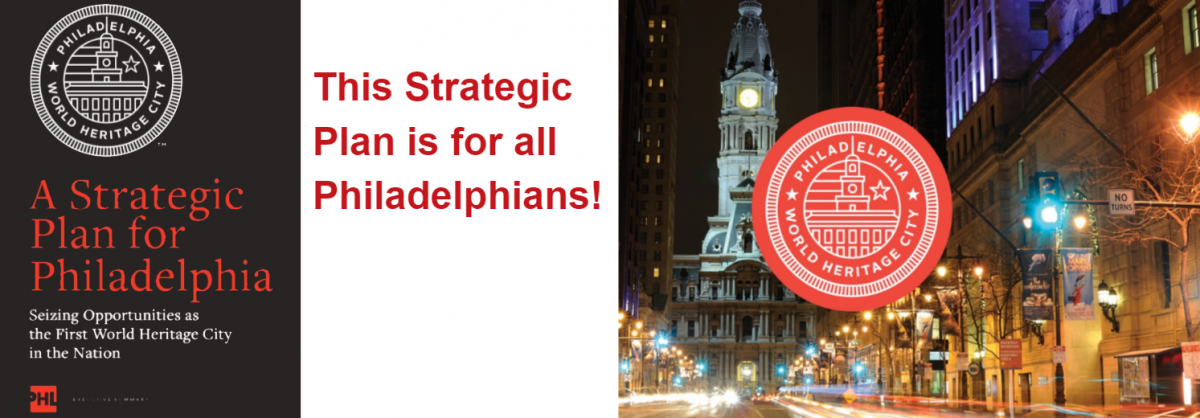- About GPA
- Global Events
- GLOBAL NEWS FROM PHL
- Global Directory
- World Heritage City
- Sustainable Development Goals (SDGs)
- Global Philadelphia Role on Sustainable Development Goals
- Completed Sustainable Development Goals
- SDG#1: No Poverty
- SDG #2: Zero Hunger
- SDG#3: Good Health & Well-Being
- SDG#4: Quality Education
- SDG#5: Gender Equality
- SDG#6: Clean Water & Sanitation
- SDG#7: Affordable and Clean Energy
- SDG #8: Decent Work and Economic Growth
- SDG #9: Industry, Innovation, and Infrastructure
- SDG#10: Reduced Inequalities
- SDG#11: Sustainable Cities and Communities
- SDG#16: Peace, Justice and Strong Institutions
- SDG#17: Partnerships for the Goals
- Press
Home ›
National Historic Landmarks in Philadelphia
Independence Hall
Independence Hall is listed as a World Heritage Site by UNESCO. It forms part of the cultural and natural heritage which the World Heritage Committee considers as having outstanding universal value.

Credit: Photo by B. Krist for GPTMC
Statement of Significance
The Declaration of Independence was adopted in 1776 in this fine 18th century building in Philadelphia, to be followed in 1787 by the framing of the Constitution of the United States of America. Although conceived in a national framework and hence of fundamental importance to American history, the universal principles of freedom and democracy set forth in these documents were to have a profound impact on lawmakers and political thinkers around the world. They became the models for similar charters of other nations, and may justly be considered to have heralded the modern era of government.
Criterion (vi) The universal principles of the right to revolution and self-government as expressed in the U.S. Declaration of Independence (1776) and Constitution (1787), which were debated, adopted, and signed in Independence Hall, have profoundly influenced lawmakers and politicians around the world. The fundamental concepts, format, and even substantive elements of the two documents have influenced governmental charters in many nations and even the United Nations Charter.
Long Description
Independence Hall in Philadelphia may be considered the birthplace of the United States of America: it was here that the Declaration of Independence was signed in 1776, the Articles of Confederation uniting the 13 colonies were ratified in 1781, and the Constitution setting out the nation's basic laws was adopted in 1787, after George Washington had presided over the debate, which ran from May to September.
The building was designed by Andrew Hamilton to house the Assembly of the Commonwealth (colony) of Pennsylvania. Finished in 1753, it is a modest brick structure with a steeple that was intended to hold a 2,080 lb (943 kg) bell. The bell, however, has cracked twice and stands silently on the ground in a special shelter (a reproduction now hangs in the steeple). Independence Hall is important not for its architectural design but for the documents of fundamental importance to American history drafted and debated here that formed the democracy of the United States.
The building has undergone many restorations, notably by Greek revival architect John Haviland in 1830, and by a committee from the National Park Service in 1950, returning it to its 1776 appearance. The universal principles of freedom and democracy have also had a profound impact on lawmakers around the world.
Independence National Historical Park, located in downtown Philadelphia ('Centre City'), interprets events and the lives of the diverse population during the years when the city was the capital of the United States, from 1790 to 1800. A section of the park where Benjamin Franklin's home once stood is dedicated to teaching about his life and accomplishments. Spanning approximately 18 ha, the park has about 20 buildings open to the public.
Source: UNESCO/CLT/WHC
World Heritage Way

Walnut Street between 5th and 6th streets has been officially renamed ‘World Heritage Way’ by Mayor Michael A. Nutter and Councilman Mark Squilla on September 8th 2014, in recognition of the presence of Independence Hall, a World Heritage Site, and in celebration of the Organization of World Heritage Cities’ Solidarity Day of the World Heritage Cities, an event that happens annually on this date.
Discover also the National Historic Landmarks (NHLs) in Philadelphia
 There are 67 National Historic Landmarks inside the city limits.
There are 67 National Historic Landmarks inside the city limits.
Alfred Newton Richards Medical Research Laboratories
American Philosophical Society Hall
Arch Street Friends Meeting House
Colonial Germantown Historic District
Elfreth's Alley Historic District
First Bank of the United States
Founder's Hall at Girard College
Frances Ellen Watkins Harper House
Furness Library University of Pennsylvania
Germantown (Manheim) Cricket Club
Institute of the Pennsylvania Hospital
Insurance Company of North America (INA) Building
Pennsylvania Academy of the Fine Arts
Philadelphia Savings Fund Society (PSFS) Building
Philadelphia School of Design for Women
Reading Terminal and Trainshed
Rittenhousetown Historic District
Second Bank of the United States
St. James-the-Less Episcopal Church
The College of Physicians of Philadelphia
The Woodlands
Thomas Eakins House
Thomas Sully Residence
United States Naval Asylum
USS Becuna
USS Olympia
Wagner Free Institute of Science
Walnut Street Theatre
Woodford
Wyck




